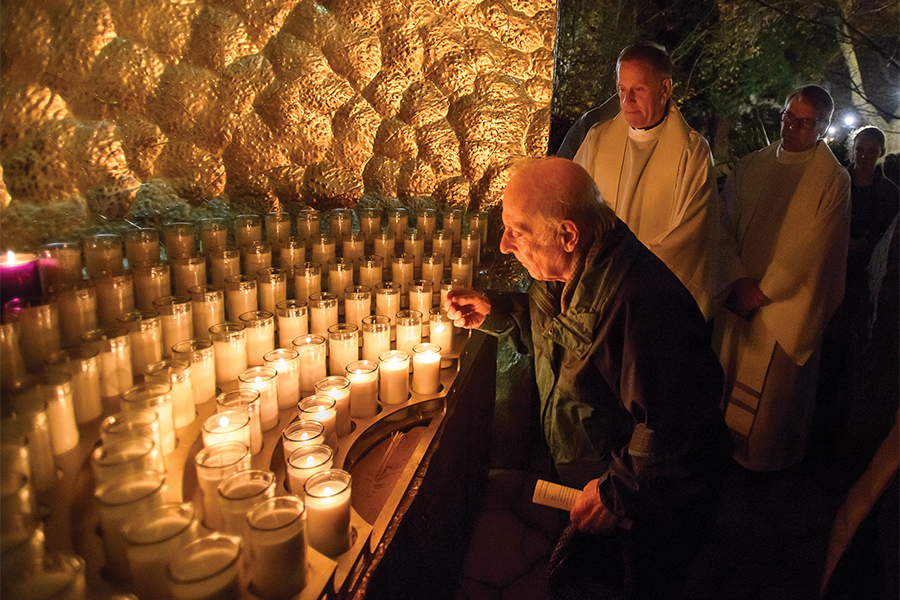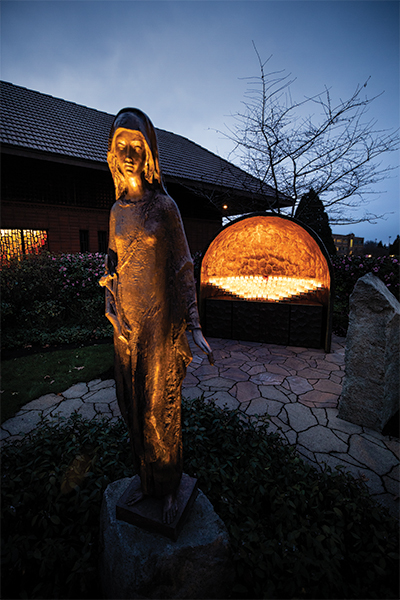
Portland Magazine
Campus Ministry
February 16, 2020

UNIVERSITY OF PORTLAND is home to a new, well-worth-a-trip-to-visit work of art: an outdoor grotto by local sculptors Mike Suri and Scott Foster. Situated in the northwest corner of the Marian Garden and adjacent to the Chapel of Christ the Teacher, the work was dedicated on November 24. In the tradition of many natural grottoes the world over, the shape suggests a cave or an arc; in the tradition of Catholic grottoes, there is a dedicated place to light a candle for a prayer or intention.
The grotto was carved and cut by hand, made of cedar, and clad in bronze, copper, and, it seems, light. At night, the light from the candles reflects and dances off the textures of the hammered bronze. The piece comes alive with the intentions placed in it.
 “We wanted the inside to be radiant,” says Scott Foster, to “broadcast the light.”
“We wanted the inside to be radiant,” says Scott Foster, to “broadcast the light.”
Light was also where the inspiration for this piece began more than 10 years ago. A student who had lost a family member came to Fr. Jim Gallagher, CSC, who was a seminarian at the time, and asked if she could light a candle somewhere on campus. She wanted to do something to mark her grief and offer an intention. At the time there was nowhere to light a candle.
When Fr. Jim returned to University of Portland as director of Campus Ministry, he was still mulling over this idea. He partnered with Todd Yuratich, the physical plant’s purchasing advisor, who set out to find the right artists to create it. Yuratich has a background as a visual artist and furniture craftsman, and he knew how to ask the right questions while also allowing the artists freedom to take the risk to create something new. He couldn’t be more pleased with the result and remarks that the work looks as though it has always been in the space—notice how the pillars that were already in the Marian Garden align with the arc, how the texture of the hammered bronze and copper complements the sculpture of Mary, how the handcut metals took inspiration from the chapel doors. The piece has a timeless quality, and it stands on its own as a work of art. “It starts taking on a presence of its own and asking its own questions,” says Yuratich. Like any important work of art, it’s also worth revisiting. “The details are there—they have to be discovered.”
Which leads us to an invitation to you. If you feel the need to light a candle, please do come on by. UP’s newest work of art, its details, its meaning to our community are now being discovered.
A special thank-you to the Lou Holtz Foundation for the inspired gift that made this work possible.
University of Portland
5000 N. Willamette Blvd.,
Portland, Oregon 97203-5798
503.943.8000
This website uses cookies to track information for analytics purposes. You can view the full University of Portland privacy policy for more information.
